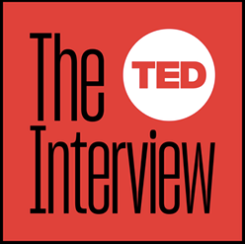Inquiry Inventory - 07/06/22
Here at The Human School, a big part of what brought us together is a deep love of reading and learning. We commit, as part of our learning journey, to sharing our week’s reading with you and what influences our thinking and learning.
Each week, you will see a post with what we’re reading, a quote, and an insight from that reading that leads us to deeper thinking.
To learn more about what we are reading, please take a look at our Connection Catalog.
"We have this banner in our offices in Palo Alto, and it expresses our view of how we should try to relate to the future. We do not want to try to predict the future. What we want to do is make the future. We want to imagine the best-case scenario outcome. And then we want to empower people to make that outcome a reality. "
This opening podcast in Season 7 of The TED Interview with host Seven Johnson opens with the above quote from Jane McGonigal’s 2010 TED talk.
In this podcast episode she is sharing her latest book, Imaginable: How to See the Future Coming and Feel Ready for Anything—Even Things That Seem Impossible Today.
There is a lot to unpack in the conversation, but her sharing the simplest way to develop a future thinking mindset struck me:
Imagine it’s 10 years from now. You are waking up….
This made me wonder what education will look like in 10 years. Why 10 years? McGonigal shares that the timeframe of 10 years gives us the freedom to imagine, unlike the timeframe of a week or a year that is more informed by what we are currently experiencing.
So…in 10 years, how has our education system evolved?
There is a strong connection here to our futures core mindshift in the Inventor Compass Point: Step out of the present and into the possibilities of the future: Navigating from ignoring the future to embracing the future.
How does your 10 year future best-case scenario for education embrace possibility? What might you do now to make that outcome a reality…to make the future?
—Randy
A New Spin on Education: Cognitive Capacity for an Uncertain Future
Betsy Hill and Roger Stark
“When students struggle with learning, the problem is often not a matter of curriculum and instruction. On this front, educators often get a bad rap. Of course, sometimes instructional practice and teacher effectiveness are at fault, but learner variability – the fact that we all have cognitive strengths and weaknesses – means that just about every learner needs support in one or more areas of cognitive processing.”
One of my objections or wonderings around education and learning has been around standards and content areas. We assume that education must be siloed into specific courses, a general overview of core content areas, and the associated skills and standards. Often, those standards focus on content specific to that course or sometimes skills specific to that course. But my objection is to the entire structure of this.
What if we determined core skills for learning, something like what our colleagues at Getting Smart mentioned above, and used those to guide our teaching/facilitating with students? What would it look like to let go of the content and the courses and instead focus on cognitive skills within self-selected content for students? What would our schooling system look like? How long would it last? How might it be structured each day? Year?
I wonder, I wonder…
-- Rachel
How to Be More Empathetic-NY Times
“More and more, we live in bubbles. Most of us are surrounded by people who look like us, vote like us, earn like us, spend money like us, have educations like us and worship like us. The result is an empathy deficit, and it’s at the root of many of our biggest problems. It’s because of how homogeneous people’s social circles have become, and also because humans naturally hold biases. But researchers have discovered that far from being an immutable trait, empathy can be developed. ”
Empathy is one of those “how we engage with others” that are foundational to the compass points themselves. When we object, we should be objecting to the parts of the system that are not working for the humans who inhabit it. This is empathy. When we invent, we should be inventing with others, collaborating and designing in congress with many stakeholders. This requires empathy. When we curate and consider what we should learn and share about the experience, this should be through a human centered lens: empathy. Lastly, when we tell stories, they ask us to make connections to others, to ensure that we are making sense of our world together. Empathy.
-Chad



